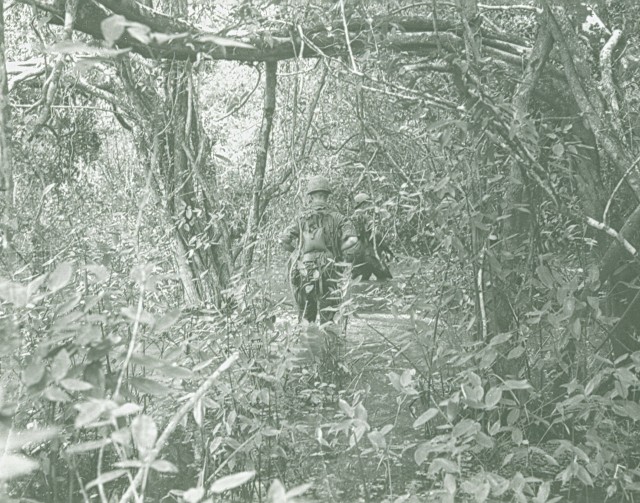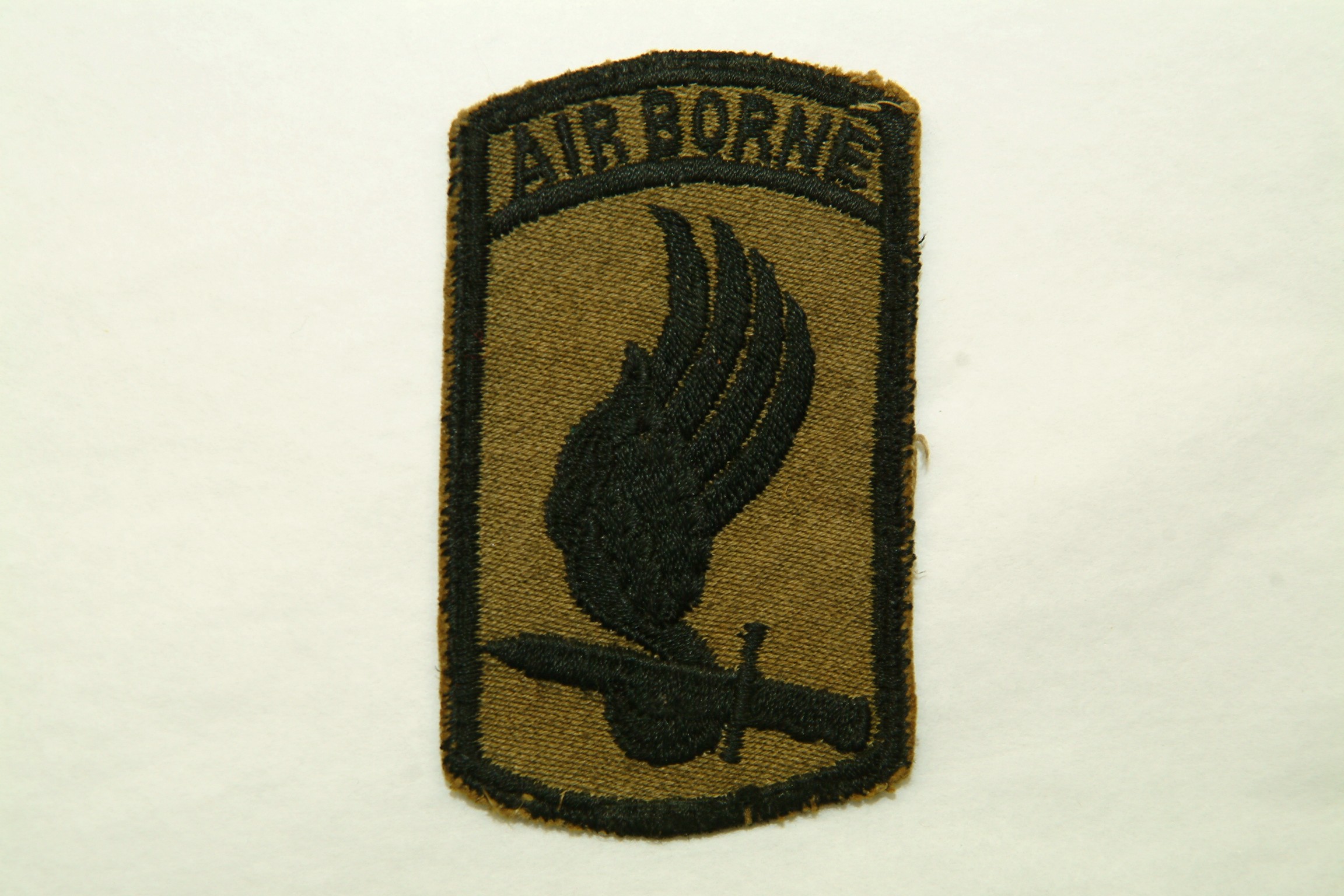In May, 1963 the U. S. Army established a new combat unit that received training in the type of warfare that was expected to be faced in Southeast Asia and Vietnam in particular. The 173rd Airborne Brigade (AB), to be known as the Aca,!A"Sky Soldiers,Aca,!A? was organized as a rapid reaction force by Pacific Command (PACOM) and was originally stationed on Okinawa. The unit trained hard under its Commander, Brigadier General Ellis W. Williamson. Training in airborne, guerrilla, and jungle warfare was conducted on Okinawa, on Taiwan, and in Korea and Thailand. Leaving Okinawa starting on May 5, 1965, the 173rd Airborne Brigade became the first major U. S. Army unit sent to Vietnam.
Originally intended to be only a temporary expedient and not expected to remain, the Brigade actually stayed in the country for nearly the full duration of the conflict, departing in August, 1971. The BrigadeAca,!a,,cs Order of Battle eventually included, among other units, the 503rd Infantry (Airborne) Regiment, components of the 319th Airborne Artillery, the 16th Armored Regiment, the 17th Cavalry, and the allied Royal Australian Regiment. Initially it was necessary for the unit to secure the air base at Bien Hoa, Vietnam. An aggressive approach to establishing command over the area was implemented. The first battalionAca,!"sized operation, involving the 2 Battalion/503rd Infantry Regiment (2/503) occurred less than two weeks after arrival as the unit was helicopter-lifted into a Landing Zone (LZ) and conducted an overnight sweep through jungles and rice paddies. At the end of May 1965, nearly all of the BrigadeAca,!a,,cs combat assets took part in a four-day airmobile operation which uncovered many VC camps and bunkers but encountered little organized resistance, as the enemy elected to avoid standing and fighting.
The 173rd was barely on station when on June 10, Viet Cong (VC) forces operating at regimental strength attacked the district town of Dong Xoai, about 100 miles north of Saigon. The 173rd was airlifted on June 13 to a forward operating airfield in preparation for action, but only the airborne artillery engaged the enemy as Army of Vietnam (ARVN) units recaptured the town, forcing the VC to withdraw. The first use of U. S. troops in offensive operations would wait until June 23, when the BrigadeAca,!a,,cs 2/503d moved into what had been the VCAca,!a,,cs formerly inviolate area of sanctuary in Aca,!A"War Zone DAca,!A?, a stronghold of heavy jungle, rainforest, and elephant grass northeast of Saigon and Bien Hoa.
The 173rd would conduct many operations in the Aca,!A"War Zone DAca,!A? arena during the first year in Vietnam developing practices that became known as Aca,!A"Search and DestroyAca,!A? missions. Because the enemyAca,!a,,cs actual location was not known in advance, such Aca,!A"sweepsAca,!A? were necessary to find VC troops, tunnels, camps, and equipment and then capture or destroy them.. The BrigadeAca,!a,,cs first year in Vietnam saw the forging of the infantry tactics necessary for conducting operations in the unconventional combat environment of Vietnam.
The experiences of the 173rd laid the foundation for counterinsurgency tactics to be used throughout the Vietnam War and afterwards. . Aca,!A"Search and DestroyAca,!A? tactics were but one aspect of the whole mission. The 173rd also had to address Aca,!A"heliborneAca,!A? assault methods, battlefield logistics, ground and air fire support, and civic affairs involving local populations. The 173rd completed twenty-five combat operations of battalion or larger strength from arrival in May 1965 through May 1966.
Upon departing his command, in February 1966, Brigadier General Williamson stated that Aca,!A"The concept of an independent brigade was new to Army policy when it was promulgated, and we were, quite frankly, an experiment. We have proved the validity of the concept beyond doubt.Aca,!A?
Editor's Note: This article is dedicated to Dr. Arthur W. Bergeron, Jr., who was originally scheduled to present the story above. Art has answered the final bugle call, passing away on February 8, 2010, after a gallant battle with cancer. A Vietnam Veteran, Soldier, scholar, author, and Army Historian here at the Army Heritage and Education Center, he is deeply missed by friends and co-workers. "Au revoir, mon ami." SALUTE!
Related Links:
A Working Bibliography of MHI Sources: 173rd Airborne Brigade










Social Sharing